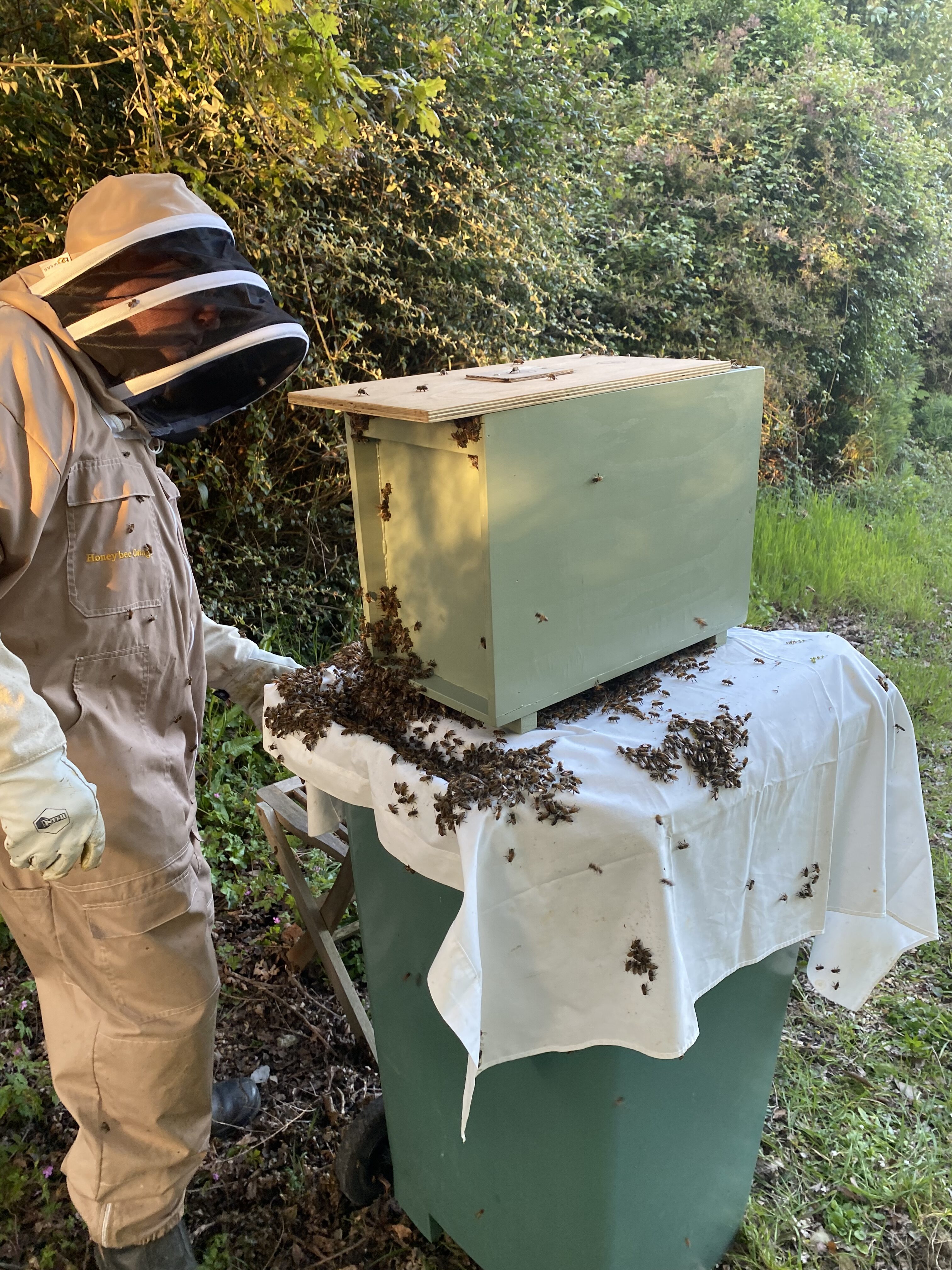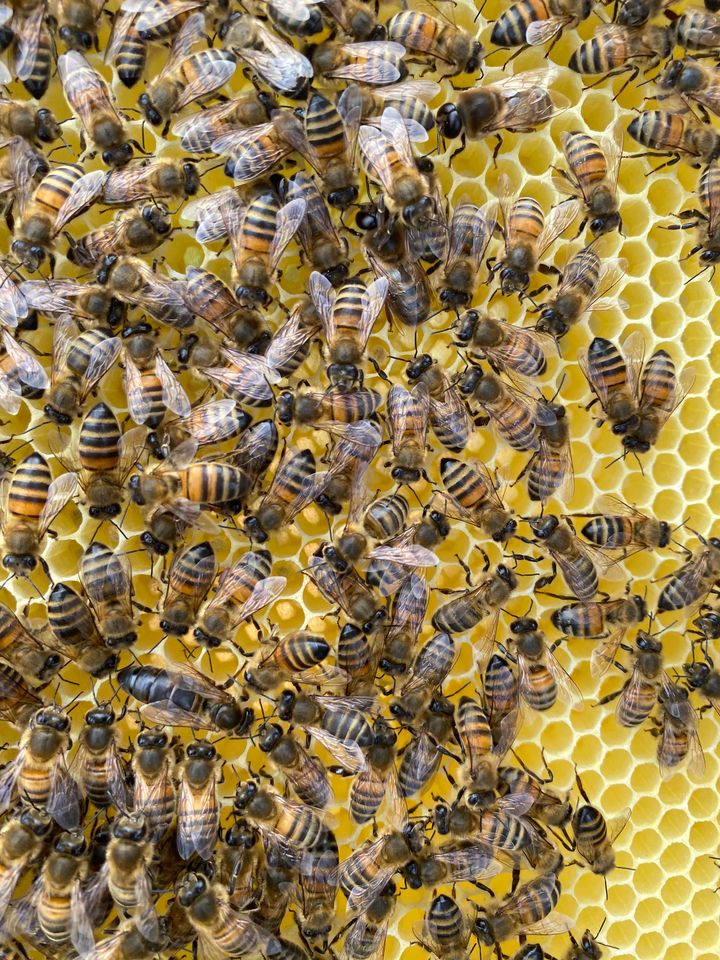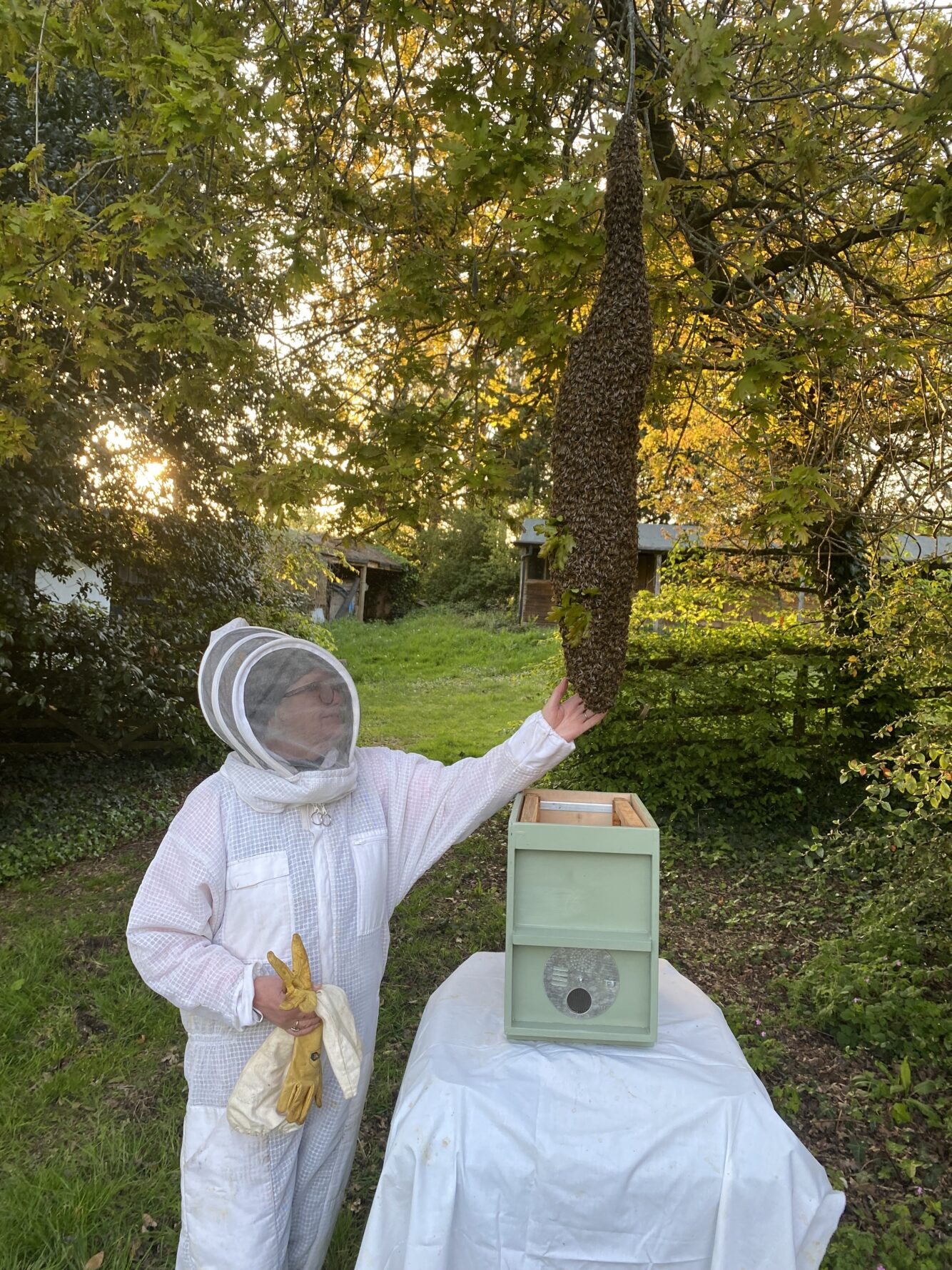Photo caption: A newly formed very calm swarm cluster with their new Queen. It’s just like touching candy floss – they do not sting unless threatened!
Bees are one of our Target-25 species at A Rocha UK. Target 25 is a project to help a range of declining species, taxonomic groups, and threatened habitats. Find our Target 25 resource page here, including our resource on bees.
St Mildred’s Church in Whippingham on the Isle of Wight achieved their Silver Eco Church award in July 2024. Eco Coordinator and bee-keeper Ruth, shares the story of their church creating an *apiary whilst working towards their silver award:

“When I joined St Mildred’s Church last year, I became part of the church committee as the Eco Coordinator. My partner and I have been registered beekeepers for over ten years and are passionate about the environment. I have always loved bees and realise the vital importance they have to our planet as pollinators.
Creating our apiary has sprung from Eco Church and our love of bees. *An apiary (also known as a bee yard) is a location where beehives of honey bees are kept.
The church has an area of woodland, which four of our team cleared and placed two empty, cleaned-up hives ready for bees. It has been a wet year so far for bees; many beekeepers have lost their bees and have had to replenish their hives.
Collecting the swarm:
Honey bee colonies reproduce by swarming, a process where about one-third to one-half of the workers in a colony leave in a swarm with the Queen to set up a hive in a new location. The original hive is left with a developing Queen, worker bees and brood.
The bees clustered in our vicarage grounds, two miles away from the church, so we really felt these were heaven-sent bees! We now have four active strong colonies with young queens. The bees have currently been relocated to a field near the church, and we’re looking for a permanent place for them elsewhere in the church grounds at the moment, but we are so grateful and proud to have our bees at St Mildred’s Church.
Photo caption: Placing a nuc box under the swarm ready to collect the bees.

We intended to leave most of the honey for the bees this year, however, our latest hive check at the end of July shows they have all done so well and there will be a small amount of honey for our church this year, which will have a St Mildred’s label.
I’m now offering bee-keeping taster sessions for anyone in our church and local area to raise awareness and point them in the right direction for what they can be doing to protect bees and get involved with bee-keeping themselves.
Our main gardener has worked wonders in our churchyard as a whole, and visitors will now find vegetables growing in the flower borders! We’ve created areas throughout the churchyard to encourage wildlife, and a local craftsman has helped us to create homes for birds and insects.
Being an Eco Church is a continuous journey and we will endeavour to keep our church inspired throughout the years. We all have a commitment to a greener, healthier lifestyle – for our children, and for the planet.
St Mildred’s congregation are given regular updates about the bees’ progress, and we are delighted to have our first small honey harvest this year for the church!
Many thanks to Eco Church for making us all more aware to reach our potential on God’s beautiful Earth.”
Written with love and passion for our church and environment by Ruth Smith from St Mildred’s Church.
Photo caption: Can you spot the unmarked Queen in St Mildred’s colony?
Photo credits: Ruth Smith

